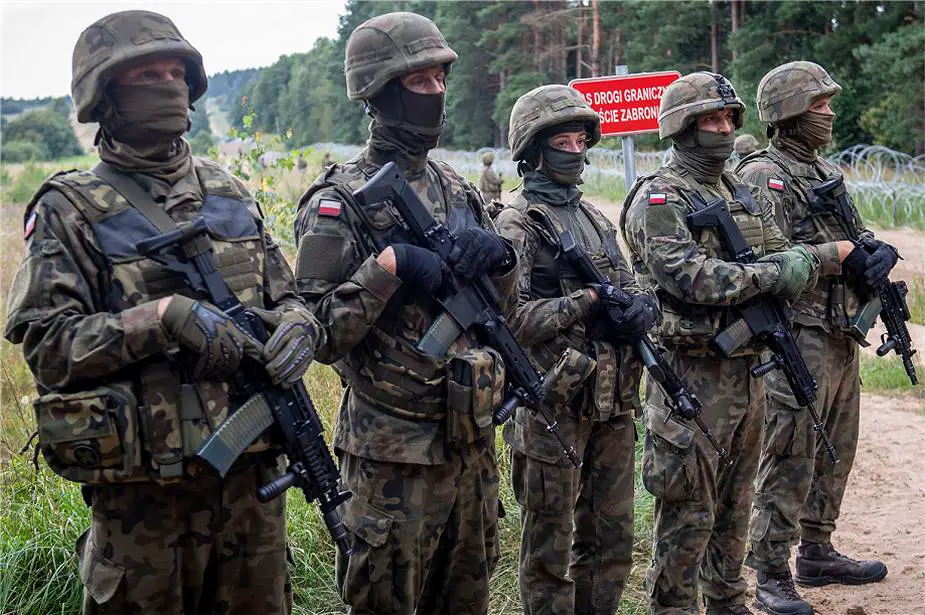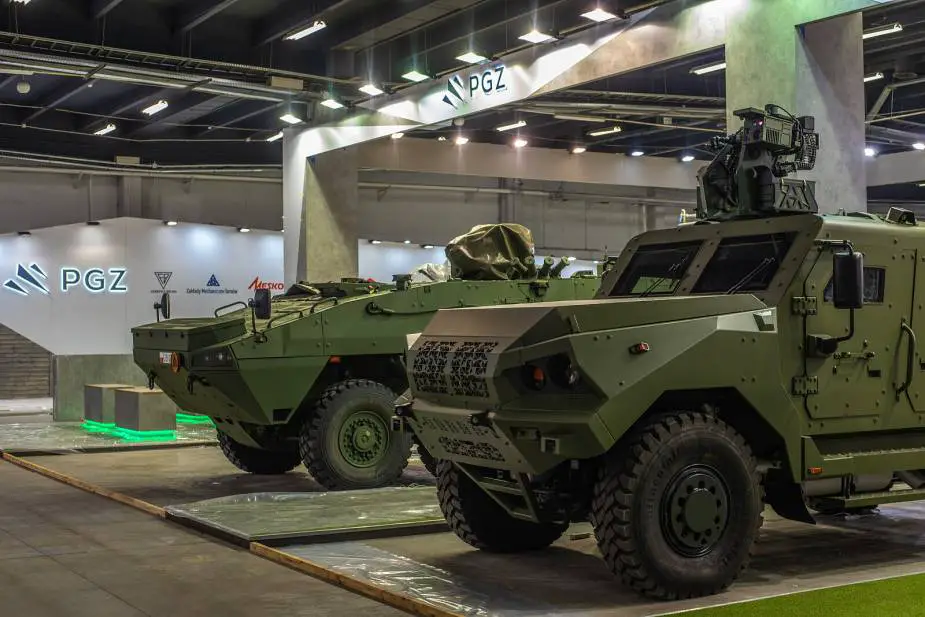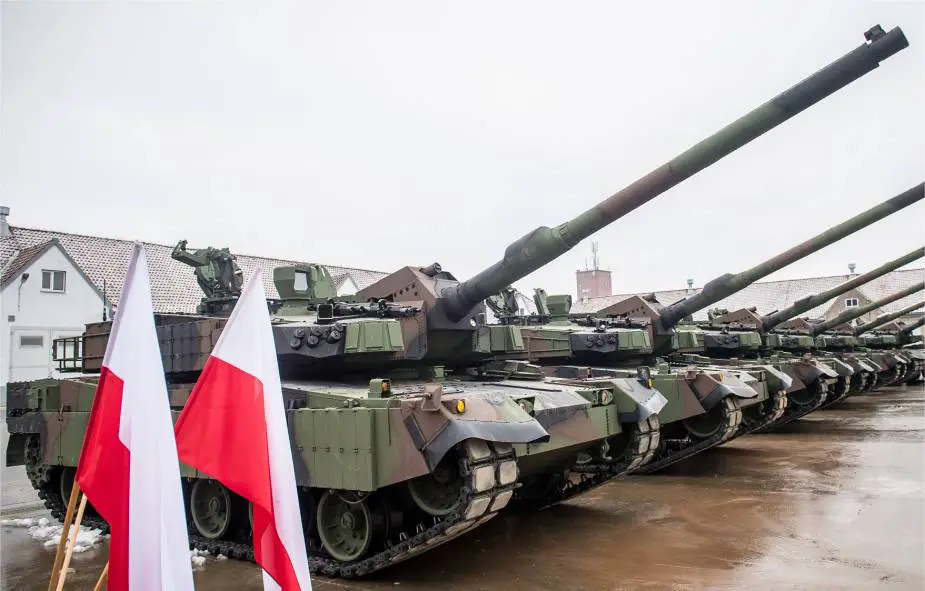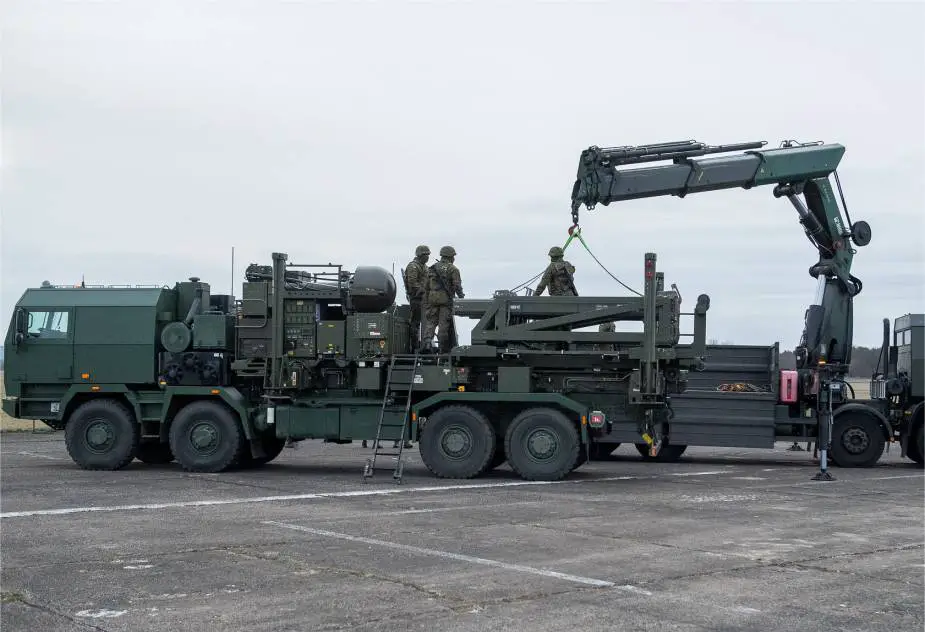Poland has made significant strides in modernizing its armed forces since joining NATO. The country is now on track to become a dominant military power in Europe. Recent events, such as the Russian invasion of Ukraine and the deployment of nuclear weapons in Belarus, have prompted Poland to bolster its military capabilities. At the same time, Poland's military modernization program, coupled with its strategic location, has positioned the country as a key player in defending against a potential Russian invasion.
Follow Army Recognition on Google News at this link

Poland wants to reach an armed force of 300,000 men by 2035. (Picture source Polish MoD)
To achieve this goal, Poland has launched an extensive modernization program aimed at upgrading its military technology and expanding the size of its armed forces. As of 2021, the Polish armed forces had around 120,000 active personnel. In the future, this number is expected to increase, as the government has announced plans to expand the size of the military to 200,000 personnel. The country aims to increase the size of its army to 300,000 soldiers by 2035.
This expansion will likely include a mix of full-time professional soldiers, conscripts, and reserve forces. In addition, Poland has also been investing in the development of its Territorial Defense Forces, which are expected to play a more prominent role in national defense.
Between 2018 and 2022, Poland's defense budget increased steadily at a compound annual growth rate (CAGR) of 7.8%, reaching $15.1 billion in 2022. This positive trend is expected to continue through 2027, with the defense budget projected to reach $26.0 billion, reflecting a CAGR of 4.1%. The increase in defense spending is a key component of Poland's strategy to modernize its armed forces and improve its defense capabilities, which is especially important given the ongoing security challenges in the region.
As one of NATO's eastern flank countries, Poland serves as a crucial buffer against potential threats from the east. The country's military strength, particularly in its ground forces, could make it Europe's first line of defense against a possible invasion by Russia. Additionally, Poland has played an active role in promoting regional security and cooperation, including through its involvement in joint military exercises with NATO allies and hosting allied forces on its territory. These efforts further enhance Poland's capacity to deter potential threats and respond effectively in the event of an attack.
Poland's military modernization program includes upgrading its fighter jets, naval fleet, and missile defense systems. The country has also invested in new technologies, such as unmanned aerial vehicles (UAVs), to enhance its intelligence, surveillance, and reconnaissance capabilities.

Warsaw continues plans to strengthen its domestic defense-industrial base, much of which is now consolidated in the state-owned holding company PGZ, using technology transfers and international partnering. (Picture source Polish MoD)
A technical modernization plan, covering the period 2021–35, was released in October 2019, which extended the planning horizon from ten to 15 years. Warsaw continues plans to strengthen its domestic defense-industrial base, much of which is now consolidated in the state-owned holding company PGZ, using technology transfers and international partnering. Beyond PGZ, several international defense primes have subsidiaries in Poland. PGZ (Polska Grupa Zbrojeniowa) is a Polish state-owned holding company that specializes in the defense industry. It was established in 2013 and comprises over 60 companies involved in the production of defense equipment and technology, including tanks, missiles, and small arms.
In conclusion, Poland has demonstrated its commitment to becoming a leading military power in Europe. Its modernization efforts and increased defense spending have positioned the country to play a critical role in NATO's defense strategy. As the security situation in Europe remains uncertain, Poland's military strength is a vital asset in ensuring regional stability and security.
Poland's armed forces are comprised of five services, namely the Land Forces, Navy, Air Force, Special Operations Forces, and Territorial Defence Forces. Success in their mission will largely depend on their ability to effectively collaborate with each other, particularly between the operational forces and the Territorial Defence Forces. To achieve this goal, Poland has placed great emphasis on promoting integration through an expanded program of joint exercises and war games. By enhancing their ability to work together, Poland's armed forces can enhance their readiness and effectiveness in responding to security challenges.
The Land and Air Forces remain the key elements of the Polish defense. The Special Operations Forces will increase their potential, both with respect to conducting high-intensity operations and their participation in lower-intensity operations abroad. The Territorial Defence Forces will achieve its full potential by providing them with increased firepower. It will make them capable of fulfilling various tasks, predominantly cooperating with operational forces and mainly acting as light infantry units.

The first F-35s for Poland will be delivered to the Polish Air Force in 2024 and deliveries will continue through 2030. (Picture source Polish MoD)
Poland plans to acquire fifth-generation fighter jets, such as the F-35 Lightning II, to replace its aging fleet of Soviet-era MiG-29 and Su-22 aircraft. Additionally, the country is investing in modernizing its helicopter fleet, air defense systems, and surveillance capabilities. Poland has indeed signed a contract to purchase 32 F-35A Lightning II fighter jets from the United States. The contract was signed in January 2020, and the first aircraft is expected to be delivered in 2024.
Poland's decision to purchase the F-35A was driven in part by the need to modernize its air force and enhance its capabilities in the face of potential threats. The acquisition of the F-35A is also seen as a sign of Poland's commitment to NATO and its alliance with the United States.

On August 26, 2022, Poland approved the execution contracts for the acquisition of 180 K2 main battle tanks MBTs. (Picture source Polish MoD)
The modernization of the Polish Army includes the acquisition of new main battle tanks, armored vehicles, and artillery systems. According to figures published in early 2022, the Polish army had around 800 Main Battle Tanks (MBTs) including 126 Leopard 2A4, 105 Leopard 2A5, 16 Leopard 2PL, 232 PT-91 Twardy, 318 T-72A/T-72M1/M1R. As military aid to Ukraine, Poland supplied 260 T-72M1/M1R and 30 PT-91 Twardt tanks to Ukraine.
In April 2022, Polish Minister of National Defence Mariusz Błaszczak signed a contract to acquire 250 American M1A2 SEPv3 Abrams main battle tanks (MBTs) for the Polish Army, 26 M88A2 Hercules armored recovery vehicles, and 17 M1074 Joint Assault Bridges, plus ammunition, logistics, and training packages.
On August 26, 2022, Poland approved the execution contracts for the acquisition of 180 K2 main battle tanks (MBTs) and 212 K9 self-propelled howitzers (SPHs) from the South Korean industry. The contracts were signed by the Polish Deputy Prime Minister and Minister of National Defence, Mariusz Błaszczak, during a ceremony held in Morąg, northern Poland. This development followed a framework agreement signed between Poland and South Korea on July 27, 2022, which paved the way for the acquisition of a total of 1,000 K2 MBTs and 672 K9 SPHs by Poland.
At a military base near Warsaw, on January 4, 2023, the Polish Defence Minister, Mariusz Błaszczak, signed a contract worth $1.4 billion. Under the agreement, 116 American second-hand M1A1 Abrams tanks along with their associated equipment and logistical support will be delivered starting this year.
According to our count in the next few years, Poland will have a force of 1,850 tanks and the country will become the largest armored force in Europe.

In April 2023, MBDA, a European company that specializes in the development and production of missiles and missile systems announced a contract with the Polish Armament Agency to supply CAMM missiles and launchers for Poland’s PILICA+ air defence upgrade program. (Picture source Polish MoD)
Poland has been working to bolster its missile defense capabilities, as evidenced by its involvement in the NATO ballistic missile defense system. The country is procuring the Patriot air and missile defense system from the United States and plans to develop its own missile defense solutions. The Poland Patriot contract refers to an agreement between the Polish government and the US government for the purchase of the Patriot air defense system. The contract, worth around $4.75 billion, was signed in March 2018 and involves the delivery of eight Patriot missile defense systems to Poland.
In May 2022, Mariusz Błaszczak, the Defense Minister of Poland, declared that his country is commencing the second phase of its mid-range air defense program. As part of this program, Poland has made a request to the United States government to purchase six Patriot batteries and associated equipment.
In April 2023, MBDA, a European company that specializes in the development and production of missiles and missile systems announced a contract with the Polish Armament Agency to supply CAMM missiles and launchers for Poland’s PILICA+ air defence upgrade program.
Designed by PGZ, PILICA+ will combine MBDA’s CAMM short-range radar-guided missiles with Polish-made autocannon and very-short range infrared guided missiles into a triple-layer system commanded by a Polish command and control system and guided by Polish radars. PILICA+ will operate as the inner tier of a highly-capable integrated Polish air defense network also including the upper-tier WISLA system and mid-tier NAREW system, which MBDA is also supporting with PGZ.
The "WISLA" program is a mid-range air defense initiative launched by the Ministry of Defense in Poland. The program aims to strengthen Poland's air defense capabilities through the procurement of modern systems and technologies. It includes the acquisition of six Patriot batteries and related equipment from the United States.
The "NAREW" program is a Polish Ministry of Defense initiative aimed at modernizing Poland's short-range air defense capabilities. The program involves the procurement of advanced, mobile anti-aircraft missile systems that can effectively counter airborne threats such as drones, helicopters, and fighter jets. The NAREW program also aims to integrate these systems into Poland's existing air defense infrastructure to create a comprehensive and effective defense network.

Poland has outlined a comprehensive plan to modernize and enhance its naval capabilities. (Picture source MoD)
The Polish Navy is undergoing significant modernization, with plans to acquire new submarines, surface combatants, and maritime patrol aircraft. The country is also focusing on enhancing its coastal defense capabilities, including the acquisition of coastal missile systems and naval strike missiles.
Poland has outlined a comprehensive plan to modernize and enhance its naval capabilities. Some of the key elements of this program include the procurement of new submarines, the purchase of corvettes, upgrades to existing vessels, and investment in unmanned systems.
To replace its aging Soviet-era submarines, Poland plans to acquire three new submarines. Additionally, the country intends to purchase three new corvettes equipped with advanced weapons systems and sensors to strengthen its maritime capabilities. Poland also aims to modernize its existing vessels, including frigates and minehunters, by upgrading them with new weapons and equipment.
Furthermore, Poland recognizes the importance of unmanned systems in modern naval operations and is investing in unmanned aerial and underwater vehicles to enhance its surveillance and reconnaissance capabilities. These investments will help to improve Poland's ability to detect and respond to potential security threats in its waters and beyond.
Polish MoD recognizes the importance of cybersecurity and electronic warfare in modern conflict, Poland is investing in the development of its capabilities in these domains. This includes the creation of a dedicated Cyber Defense Force and the acquisition of electronic warfare systems.
In conclusion, the modernization program of the Polish armed forces demonstrates a strong commitment to enhancing the country's military capabilities and ensuring its national security. Poland is investing significantly in the modernization of all branches of its armed forces, including the Air Force, Army, Navy, and Missile Defense, as well as focusing on emerging domains like cybersecurity and electronic warfare.
The Polish government's efforts to increase the number of soldiers and expand the Territorial Defense Forces further underline its dedication to building a robust and well-rounded defense infrastructure. These developments not only contribute to Poland's own security but also support its obligations as a NATO member.
While the modernization program is ambitious, its success will depend on factors such as budgetary allocations, geopolitical developments, and technological advancements. If Poland is able to sustain its investments in defense modernization, it will likely emerge as a more potent and resilient military force in the coming years, better equipped to address the challenges of an increasingly complex and unpredictable security environment.














